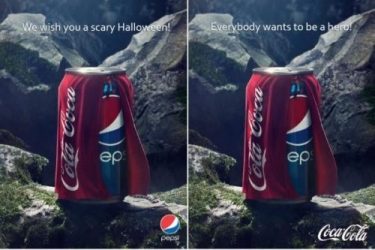Subliminal advertising uses logos or visuals, television commercials, or music to convey messages without drawing attention to itself. It’s a sly technique to get your point over, yes; but it usually works, so businesses employ it. It might even work as an effective marketing strategy for your business or organization. This, however, does not mean this strategy is all perfect. Ethical issues have also been raised about subliminal advertising. Regardless, reading this piece to the end will be worth it. You will learn all that is needed to be known about subliminal advertising, and how to make effective use of it, while we also highlight some examples of great and craziest subliminal messages that work.
What is Subliminal Advertising
Subliminal advertising is the type of advertising that uses words, visuals, or sounds to subtly deliver a message to a target audience. It is the use of visual and aural cues to sway consumer behavior and affect subconscious thought processes when the consumer isn’t consciously aware of the message being delivered.
Subliminal advertising can also be seen in brand identity components like a company’s logo or tagline. These components are constantly employed to build brand awareness and get customers to connect specific thoughts and emotions with your product.
Although ethical subliminal advertising is used for legitimate causes that are not malevolent or inappropriate, it is deliberately designed to be manipulative. Instead, it should subtly influence your audience’s subconscious thoughts with an important but innocuous message. If done well, even if you didn’t directly communicate your intended message to your audience’s conscious thoughts, they will still be aware of it after being exposed to the commercial.
Subliminal Advertising Messages
Subliminal advertising messages are a sort of signal or message that is intended to bypass the conscious mind’s typical boundaries of awareness. For instance, it could be a sound that is inaudible to the conscious mind but audible to the unconscious or deeper mind, or it could be a brief visual that is communicated but is only viewed unconsciously. It may be more accurate to say that the subliminal message (sound or image) is perceived by deeper areas of what is otherwise a single integrated mind, rather than the way it is typically defined, which assumes a boundary between conscious and unconscious.
Subliminal messages can be flashed at an audience for an extremely brief period of time, or they might be hidden in an image or icon. Regardless of which, the goal of using subliminal messages in advertising is to attract consumers’ attention without them even realizing it.
Read Also: INSTITUTIONAL ADVERTISING: Best Practices with Examples (Updated)
Is Subliminal Advertising Legal in the United States?
In the United States, the government does not have a clear rule against subliminal statements. Media outlets and government agencies deal with this problem and look into how it affects the public. Some rules about subliminal say that these messages can’t be deceptive, but they can still be there.
How to Use Subliminal Messages
Having learned about the nitty-gritty of subliminal advertising, let’s shift our focus to how to use subliminal messages to fuel your next marketing campaign to see how effective it can be. Generally, when it comes to subliminal marketing, the sky’s the limit. Nevertheless, you may consider putting into practice any of the following ideas or suggestions:
#1. Incorporate Subliminal Message in Your Logo
Your logo is one of the greatest places to use it. Generally, your logo remains constant, unlike the majority of your marketing materials, which are continuously changing.
Your logo is the ideal vehicle for your subliminal message because it is likely to appear in the majority of your marketing initiatives. As such, the message will get more deeply buried in your audience’s mind the more times they see it.
#2. Add Meaningful and Relevant Images to Your Campaign
Generally, the typical human receives information via seven distinct sensory modalities.
- Auditory
- Visual
- Taste
- Touch
- Smell
- Body awareness (or proprioception)
- Vestibular (motion and equilibrium)
The visual sense is by far the most influential of the seven senses. That’s why sub-visual messaging is so powerful as a sort of covert marketing.
You can do this, for instance, by using colors that are commonly associated with something familiar to your audience or by flashing graphics or images in the video.
The use of color psychology to convey meaning subtly is a straightforward technique. According to scientific research, our brains and hearts react differently to different colors.
Below are a few examples of common colors and the feelings or emotions they create;
- Red symbolizes excitement, energy, strength, action, danger, and the need for physical demands to be met (such as hunger or affection).
- Yellow symbolizes joy, vivacity, hope, happiness, and optimism.
- Orange connotes a variety of positive emotions, including warmth, friendliness, hunger, fun, freedom, and comfort
- Blue connotes reliance, dependability, peace, steadiness, stability, and trust.
- Green means life, prosperity, peace, health, and rest.
- Pink, in one word connotes feelings; romance, empathy, care, hope, sensitivity
- Purple symbolizes piety, self-respect, pride, luxury, refinement, courage, and mystery.
When applied correctly, color psychology can increase the effectiveness of your social media advertisements. In addition, when properly applied, color psychology can sway consumers to take action on your advertisements.
Including covert messages in your social media posts is only one application of subliminal communication. Sometimes all it takes to get a reaction from your audience is the choice of colors you use.
#3. When Using Audio, Use Sub-Audible Messaging.
The self-help and personal help sectors have made considerable use of audio delivery of subliminal messages. Hence, you can use this strategy as a marketer in your social media marketing.
Your social media initiatives can greatly benefit from the use of sub-audible messages. Sub-audible messages are auditory hints that are typically audible at a volume that is lower than your main audio source. They are only audible to the subconscious mind because of their decreased volume.
As an alternative, you may also employ a sound connected to a favorite thing of your audience. An example of this is when a commercial uses bells with a Christmas motif to increase sales during the holiday season.
Nevertheless, do not undervalue the impact of sound. When used properly, it can be a tool for your marketing initiatives to provide subliminal messages. Therefore, try to include subliminal messaging in your advertisements by using visual signals.
#4. Use a Song to Spread Your Message
Ads rely heavily on music, and that influence can be amplified by using subliminal messaging in the form of music in paid social media campaigns.
Putting your message over the music is one option. To convey your message, you may, for instance, record a short dialogue and set it to music.
Even if the viewer isn’t paying close attention to the dialogue, their subconscious will still take it up. The goal of this strategy is basically to increase consumers’ confidence in your company. This is especially the case if the music is optimistic and the message aims to instill trust in the quality of the goods or services you’re offering.
#5. Send Your Subliminal Messages Using Typography
Advertising campaigns can also benefit from the use of typography, or the art of arranging letters and text, to convey subliminal messages. Choosing which letters to capitalize in a statement can convey meaning. You might even cover up a few letters here and there.
Moreover, how someone interprets a message may depend on the font chosen to write it. In summary, the font you choose may not convey any particular meaning, but it will affect how the reader responds to what you have to say.
For instance, Adobe Garamond Pro is a more manly typeface that might work well in an advertising campaign aimed at guys.
While you can use Comic Sans to give your advertisement a playful and hilarious feel.
Other ideas to try implementing;
- Leverage graphics and symbols that are concealed or difficult to see in various parts of your advertisement.
- Use visual cues or graphics in the text of your advertisement, especially in the brand name.
- Make inventive logos that, depending on the hue you emphasize, can be seen as either one of two distinct images.
- Utilize images relating to your brand and the call to action you want to get across.
- Use the native strategy to covertly include a product in a piece of media that isn’t intended to be an advertisement. For exa: In instance, in a movie, the main character uses a particular brand of phone.
Examples of Effective Subliminal Advertising
Here are some examples of how great subliminal advertising can be for businesses and how even the biggest companies use it for marketing purposes.
#1. Amazon’s logo
Yes, you are wondering, Where is the subtle message in a logo that you have seen a million times before? But have you ever observed that the arrow in this logo points from the letter “a” to the letter “z,” informing your subconscious that you can literally buy anything on Amazon? Now you get it too. There are actually two messages deftly in this one device. What about the arrow also resembling a grin, making you feel good about the brand?
#2. Honey Nut Cheerios
In 2017, Honey Nut Cheerios took Buzz the Bee’s image off of the cereal boxes, leaving only a white outline of the well-known bee. Its cause? It stated in a press release that it wished to draw attention to the declining bee population. By including the significant environmental cause in the product packaging, the marketing effort is intended to inspire consumers to produce bee-friendly flowers.
#3. The Gillette logo
For both men’s and women’s razors, Gillette is well known. With a sharp slash across both the “G” and the “i,” its logo cleverly and subtly conveys what the company does best.
Why Is Subliminal Advertising Illegal?
According to court decisions and the FCC, subliminal marketing is a form of deception. For unfair advertising to be stopped, the act must be done on purpose and have an effect on business. This could be harder to show with subliminal marketing.
What Is True About Subliminal Advertising?
Advertising is a way to get people to do what you want them to do, but subconscious advertising is a way to trick people. Subliminal advertising can make people do things they wouldn’t do if they had all the facts. It does this by sending secret messages that aren’t consciously noticed.
Is Subliminal Advertising Morally Wrong?
Many typically see this kind of advertising as unethical, and some types of it are even against the law. Most study done so far shows that people do in some way pick up on subliminal stimuli, which can change how they act. Subliminal messages spread like wildfire and are mainly to trick people.
Final Thought
Oh, definitely! Subliminal advertising is just one of the many ways you can grow your brand.
At least a few times in our lives, most of us have seen a subliminal commercial without even realizing it. This idea gives off a sinister vibe; it’s unsettling to think that the commercials we encounter on a daily basis may be sending a hidden message to our brains.
But the intent isn’t always malicious. The goal of any advertising campaign is to increase sales of the advertised product or service. There is an element of psychology here. Indeed, one could argue that advertising rests on the twin pillars of psychology and persuasion.
Related Articles
- WHAT IS ADVERTISING? All You Should Know
- How to Advertise on Google: Beginners Guide
- MEDIA PLANNING: What Is It & Why Is It Important?
- BEST WAYS TO ADVERTISE YOUR BUSINESS: 10 Tips To Advertise Your Business






